Top Microcontroller Based Wearable Gadget Ideas for Makers
Category: Embedded Systems
Unlocking Innovative Microcontroller Wearable Gadgets for Tech Enthusiasts
If you're a developer, hobbyist, or tech enthusiast drawn to Raspberry Pi, embedded systems, and microcontroller programming, you've undoubtedly explored countless projects that push the boundaries of what small, efficient electronics can achieve. Yet, discovering wearable gadget ideas tailored for microcontrollers that combine creativity with practical utility can be challenging. You've landed here because you want fresh, feasible project concepts that leverage your skills in Python, C/C++, and low-level hardware design—ideas that not only inspire but also provide learning opportunities and potential real-world applications.
This post addresses the exact gap many seasoned makers face: translating microcontroller expertise into impactful, wearable tech projects. You'll find a thoughtfully curated outline that walks through innovative concepts such as fitness trackers, health monitors, smart jewelry, and gesture-controlled devices, all rooted in solid embedded systems development. Unlike generic lists, this guide integrates technical insights, hardware options, and programming considerations tailored for your development environment, ensuring you can jumpstart or refine your next project with confidence. Read on to explore diverse wearable gadget ideas that spark your creativity and harness the full power of microcontroller-based design.
- Unlocking Innovative Microcontroller Wearable Gadgets for Tech Enthusiasts
- Understanding Wearable Gadgets: Definition, Key Features, and the Microcontroller Advantage
- Essential Microcontrollers for Wearables: Choosing the Right Brain for Your Project
- Sensors and Modules: Exploring Essential Components for Microcontroller Wearable Gadgets
- Fitness and Health Monitoring Devices: Leveraging Sensor Fusion for Wearable Innovation
- Smart Jewelry and Accessories: Transforming Fashion into Intelligent Wearables
- Gesture Controlled Wearables: Enhancing Interaction with Accelerometer and Gyroscope Technology
- Wearable Environmental Monitors: Designing Gadgets to Track Air Quality, UV Exposure, and Noise Levels
- Low-Power Design and Battery Management: Techniques to Maximize Wearable Usability
- Programming Embedded Systems for Wearables: Best Practices in Efficient Code Development with Python (MicroPython) and C/C++
- Integrating Wireless Communication: Enabling BLE, Wi-Fi, and LoRa Connectivity in Microcontroller Wearables
Understanding Wearable Gadgets: Definition, Key Features, and the Microcontroller Advantage
Wearable gadgets are compact electronic devices designed to be comfortably worn on the body, offering continuous interaction, monitoring, or assistance to users throughout their daily activities. Unlike traditional electronics, these devices blend computing capabilities with portability, requiring a careful balance of size, power efficiency, and user-friendliness. At their core, wearable devices must be unobtrusive, low-power, and capable of real-time data processing, enabling features like health tracking, motion detection, notification alerts, and environmental sensing.
Key Features of Wearable Gadgets
Effective wearable gadgets share several fundamental characteristics that define their usability and performance:
- Compact and Lightweight Design: To ensure comfort and prolonged use, wearables need to be miniaturized without sacrificing functionality.
- Low Power Consumption: Battery life is critical; optimized energy usage extends operational time and reduces maintenance frequency.
- Sensor Integration: Embedded sensors (accelerometers, gyroscopes, heart rate monitors, etc.) collect real-time data crucial for various applications.
- Interactivity: Seamless interfaces, such as buttons, touchscreens, or gesture controls, facilitate direct user engagement.
- Wireless Connectivity: Bluetooth, Wi-Fi, or other communication protocols enable synchronization with smartphones or cloud services.
- Robust Embedded Software: Reliable firmware, often developed in languages like C/C++ or Python (with microcontroller support), ensures precise control and data management.
The Role of Microcontrollers in Wearable Devices
Microcontrollers are the heart of wearable technology, orchestrating sensor data acquisition, processing, and communication while maintaining minimal power usage and compact size. These integrated circuits combine a processor core, memory, and peripherals on a single chip, making them ideal for embedded systems that require:
- Efficient Power Management: Advanced microcontrollers feature sleep modes and dynamic frequency scaling to optimize energy consumption.
- Real-Time Processing: Immediate responsiveness to sensor inputs enables live feedback, crucial for fitness tracking or health monitoring.
- Compact Integration: Their small footprint allows designers to embed multiple functionalities into sleek wearables without bulk.
- Programmability and Flexibility: Support for programming languages such as C/C++ and Python (e.g., MicroPython) allows developers to tailor behavior precisely to project needs.
- Connectivity Support: Built-in modules handle wireless communication protocols essential for data exchange.
By leveraging microcontrollers, wearable gadget developers can create interactive, reliable, and energy-efficient devices that fit naturally into daily life, paving the way for innovative applications in fitness, healthcare, personal safety, and beyond. This foundational understanding is essential as we delve deeper into specific microcontroller-based wearable project ideas tailored for Raspberry Pi enthusiasts and embedded systems developers.
Image courtesy of Tuğçe Açıkyürek
Essential Microcontrollers for Wearables: Choosing the Right Brain for Your Project
Selecting the ideal microcontroller is a critical step in designing effective wearable gadgets, as it directly impacts performance, power consumption, size, and development flexibility. The microcontroller must balance low power usage, sufficient processing capabilities, and robust connectivity options to handle real-time sensor data and wireless communication seamlessly. Below, we explore three popular microcontroller families widely embraced by developers building wearable technology: ARM Cortex-M series, ESP32, and Atmel AVR variants. Each offers distinct advantages and trade-offs, making them suitable for different types of wearable applications.
ARM Cortex-M Series: Power and Performance for Precision Wearables
ARM Cortex-M microcontrollers dominate the embedded industry due to their scalable performance levels and efficient power management features. Common in wearables like fitness trackers and health monitors, these MCUs deliver strong computational power with minimal energy drain.
Pros:
- Wide range of options: Cortex-M0/M0+ for ultra-low power applications, up to Cortex-M4/M7 for advanced processing and DSP capabilities.
- Efficient low-power modes: Tailored for battery-powered devices requiring extended operation.
- Rich peripheral interfaces: Support for SPI, I2C, UART, ADCs, and integrated timers simplifies sensor and communication integration.
- Strong ecosystem: Extensive development tools, libraries, and RTOS support accelerate firmware development in C/C++.
Cons:
- Steeper learning curve for beginners compared to simpler 8-bit MCUs.
- Some higher-end versions may increase cost and power consumption beyond basic needs.
ESP32: Connectivity-Driven Wearable Solutions
The ESP32 microcontroller by Espressif is a favorite for wearables demanding integrated wireless capabilities thanks to its built-in Wi-Fi and Bluetooth (Classic and BLE) modules. This makes it an excellent choice for smart wearables that interact with mobile apps or cloud platforms.
Pros:
- Dual-core processor: Powerful enough for multitasking sensor fusion and communication.
- Integrated Wi-Fi and Bluetooth: Eliminates the need for additional modules, saving space and cost.
- Supports MicroPython: Allows rapid prototyping with Python, suitable for developers familiar with higher-level programming.
- Extensive community support: Numerous open-source libraries and examples tailored for wearable sensors and wireless data exchange.
Cons:
- Higher power consumption compared to ultra-low-power Cortex-M MCUs, which may reduce battery life in always-on applications.
- Larger physical footprint, sometimes challenging for ultra-compact designs.
Atmel AVR Variants: Simplicity and Reliability for Basic Wearables
Atmel’s 8-bit AVR microcontrollers, such as the popular ATmega328P used on Arduino platforms, remain a proven choice for straightforward wearable projects emphasizing simplicity and low cost.
Pros:
- Ease of use: Ideal for beginners and rapid development with vast Arduino-compatible resources.
- Low power modes: Suitable for low-rate data acquisition wearables.
- Compact and inexpensive: Affordable microcontrollers with a small package footprint.
- Large community and support: Tons of tutorials, shields, and sensor libraries available.
Cons:
- Limited processing power and memory restrict their use in complex or multitasking wearables.
- No native support for wireless communication; external modules are required for connectivity.
| Microcontroller | Key Strengths | Ideal Wearable Applications | Power Consumption | Connectivity |
|---|---|---|---|---|
| ARM Cortex-M | Scalable performance, low power | Health monitors, fitness trackers | Very Low | Modular |
| ESP32 | Wi-Fi & Bluetooth integrated | Smart jewelry, IoT wearables | Moderate | Built-in |
| Atmel AVR (8-bit) | Simple, cost-effective, beginner-friendly | Basic step counters, simple sensors | Low | External |
Choosing the right microcontroller for your wearable project depends on the specific requirements such as processing needs, power budget, wireless connectivity, and development expertise. For embedded systems developers comfortable with C/C++, ARM Cortex-M offers versatile power-efficient platforms. If seamless wireless integration and Python programmability are priorities, ESP32 is a compelling choice. For simpler, cost-sensitive designs with minimal connectivity, Atmel AVR variants remain reliable workhorses. In the upcoming sections, we’ll explore creative wearable gadget ideas leveraging these microcontrollers to inspire your next project journey.
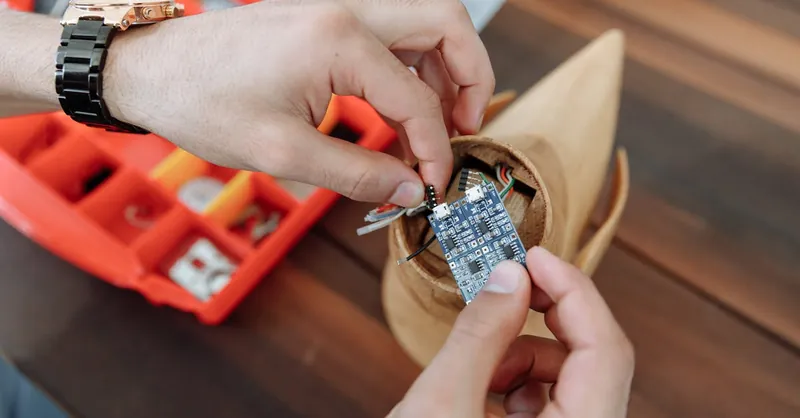
Image courtesy of Thirdman
Sensors and Modules: Exploring Essential Components for Microcontroller Wearable Gadgets
Integral to the functionality of any microcontroller-based wearable device is the integration of high-precision sensors and communication modules. These components gather critical data about the user’s body or environment and enable real-time interaction, transforming raw electrical signals into actionable insights. Choosing the right sensors not only influences the accuracy and responsiveness of your wearable but also affects power consumption and overall device complexity.
Key Sensors for Wearable Devices
-
Accelerometers and Gyroscopes
Often combined in inertial measurement units (IMUs), accelerometers and gyroscopes track motion, orientation, and gesture recognition. These sensors are indispensable for fitness trackers, fall detection systems, and gesture-controlled wearables. Popular models include the MPU-6050 and LIS3DH, offering low power consumption and I2C/SPI communication compatibility with microcontrollers like ARM Cortex-M and ESP32. -
Heart Rate Monitors (PPG Sensors)
Photoplethysmography (PPG) sensors measure heart rate by detecting blood volume changes through light absorption. Integrated into wristbands or smartwatches, they provide continuous cardiovascular monitoring. Modules like the MAX30100/MAX30102 offer built-in LED drivers and optics, simplifying embedded system integration while maintaining high accuracy. -
Temperature Sensors
Monitoring skin or ambient temperature provides health insights and environmental awareness. Sensors such as the TMP36 or digital temperature sensors like the DS18B20 are commonly used due to their small size, ease of interfacing via analog or digital protocols, and minimal power draw, making them ideal for wearable thermal tracking.
Wireless Modules for Seamless Connectivity
Wireless connectivity is a cornerstone of wearable technology, enabling devices to send data to smartphones, cloud platforms, or other peripherals generally via Bluetooth Low Energy (BLE) or Wi-Fi.
-
Bluetooth Modules (BLE)
Bluetooth Low Energy modules, such as the Nordic nRF52 series or integrated BLE in ESP32, allow for reliable, low-power wireless communication essential for continuous data synchronization and control. BLE’s low power profile makes it the preferred protocol for battery-powered wearables aiming for extended runtime. -
Wi-Fi Modules
Although more power-hungry, Wi-Fi modules integrated into microcontrollers like the ESP32 provide higher bandwidth and direct internet connectivity for smart wearables requiring cloud-based services, OTA updates, or multimedia streaming features. -
Other Communication Interfaces
Depending on your project, additional interfaces like NFC (Near Field Communication) for contactless payments or UWB (Ultra Wideband) for precise location tracking can be integrated, expanding the wearable’s functionality.
Integration Considerations
When selecting sensors and modules for your wearable gadget, keep in mind:
- Power Efficiency: Opt for sensors with low operating currents and sleep modes to extend battery life.
- Communication Protocols: Ensure sensor compatibility with your microcontroller’s available I2C, SPI, or UART interfaces.
- Form Factor: Prioritize compact, lightweight modules to maintain wearable comfort.
- Calibration and Accuracy: Consider sensors with factory calibration or easy self-calibration methods for reliable data.
By combining these sensors and wireless modules thoughtfully, developers can craft sophisticated microcontroller-based wearable devices that deliver precise monitoring, seamless communication, and user-friendly experiences. The next sections will dive into exciting project ideas illustrating these components in action, empowering you to build creative and practical wearables tailored to your embedded systems expertise.
Image courtesy of Torsten Dettlaff
Fitness and Health Monitoring Devices: Leveraging Sensor Fusion for Wearable Innovation
Fitness and health monitoring devices represent some of the most impactful and popular categories in microcontroller-based wearables. By integrating multiple sensors and applying sensor fusion algorithms, these gadgets deliver comprehensive insights into user activity and physiological status with unprecedented accuracy and reliability. Popular projects include step counters, sleep trackers, pulse oximeters, and fall detection devices, all empowered by embedded systems that continuously collect, process, and analyze sensor data in real time.
Step Counters and Activity Trackers
Step counters use accelerometers and gyroscopes to monitor motion, detect walking or running patterns, and calculate calories burned. Implementing efficient motion detection algorithms on ARM Cortex-M or ESP32 microcontrollers allows for precise step counting while minimizing power consumption. These devices often incorporate Bluetooth Low Energy (BLE) modules to sync data seamlessly with smartphones, supporting user-friendly fitness apps and progress tracking.
Sleep Tracking Systems
Sleep trackers rely on sensor fusion combining motion data from IMUs and physiological signals like heart rate variability from PPG sensors. Embedded microcontrollers process these signals to distinguish between different sleep stages — REM, light, and deep sleep — providing actionable feedback on sleep quality. Low-power microcontrollers with smart sensor management prolong device uptime overnight, while wireless connectivity enables data upload for detailed analysis.
Pulse Oximeters for Blood Oxygen Monitoring
Pulse oximeters measure blood oxygen saturation (SpO2) and pulse rates using red and infrared light sensors integrated into PPG modules (e.g., MAX30102). These wearables are critical for continuous health monitoring, especially in respiratory conditions. Accurate timing and signal processing implemented in C/C++ on microcontrollers ensure reliable readings. Bluetooth connectivity facilitates real-time alerts and remote health supervision via companion mobile applications.
Fall Detection Devices
Fall detection systems combine accelerometer, gyroscope, and sometimes barometric sensor data to detect sudden, abnormal movements indicative of a fall. By running embedded algorithms that analyze impact force, orientation changes, and inactivity post-fall, these devices can trigger emergency notifications automatically. Low-latency processing on ARM Cortex-M MCUs ensures prompt detection, while BLE modules enable immediate communication with caregivers or emergency services.
Key Benefits of Microcontroller-Based Fitness and Health Monitors
- Real-time Data Analysis: Embedded processing allows immediate interpretation of sensor inputs without relying solely on cloud services.
- Extended Battery Life: Tailored low-power hardware and intelligent firmware design maximize the usability of wearables for continuous health monitoring.
- Compact and Comfortable Designs: Small microcontrollers and integrated sensor modules enable sleek form factors suitable for all-day wear.
- Customizability and Expandability: Developers can program device behavior and integrate additional sensors or connectivity options to meet niche health or fitness needs.
By combining multi-sensor arrays, power-efficient microcontrollers, and robust wireless communication, these wearable fitness and health devices provide invaluable tools for personal well-being, athletic training, and medical monitoring. Whether you’re building a simple step counter or an advanced fall detection system, leveraging embedded systems and sensor fusion techniques elevates your project's accuracy, responsiveness, and user impact.
Image courtesy of Tuğçe Açıkyürek
Smart Jewelry and Accessories: Transforming Fashion into Intelligent Wearables
Smart jewelry and accessories offer an exciting frontier for microcontroller-based wearable projects, blending aesthetics with cutting-edge embedded technology. These devices go beyond traditional ornamentation by incorporating notifications, gesture recognition, and ambient awareness features into elegant, everyday wearable pieces like rings, bracelets, necklaces, and even hairpins. For Raspberry Pi and microcontroller developers skilled in Python, C/C++, and embedded systems, smart jewelry projects provide an incredible opportunity to innovate at the intersection of fashion, usability, and technology.
By integrating compact sensors such as miniaturized accelerometers, touch sensors, and ambient light detectors with ultra-low-power microcontrollers—especially options like the ESP32 for wireless connectivity or ARM Cortex-M for optimized energy efficiency—these wearables can discreetly deliver real-time alerts for calls, messages, or calendar events directly through subtle vibrations or LED cues. Furthermore, incorporating gesture recognition algorithms enables intuitive control schemes, allowing users to answer calls, control music playback, or trigger smart home devices simply through finger taps or wrist movements. Ambient awareness features, driven by proximity sensors and environmental data processing, open possibilities for context-sensitive behaviors such as adjusting notifications based on surroundings or activating safety alerts in noisy environments.
Key technical considerations for smart jewelry and accessories include:
- Miniaturization and Component Placement: Designing custom PCBs that fit within small form factors without compromising comfort or style.
- Power Management: Employing microcontrollers with sophisticated sleep modes and efficient energy harvesting (e.g., solar or motion-based) to extend battery life in space-constrained devices.
- Wireless Communication: Utilizing Bluetooth Low Energy (BLE) or Near Field Communication (NFC) to seamlessly connect with smartphones or other IoT devices.
- Embedded Firmware Development: Crafting lightweight, responsive firmware in C/C++ or MicroPython to deliver smooth user interactions while managing sensor data and communication protocols reliably.
- User Interface Design: Implementing minimalist yet effective feedback mechanisms such as multi-color LEDs, haptic motors, or capacitive touch controls that maintain the jewelry’s aesthetic appeal.
Smart jewelry projects exemplify the powerful synergy between embedded systems design and wearable elegance, offering developers hands-on experience with integrated sensor fusion, low-power wireless technologies, and compact hardware architectures. Whether creating a ring that notifies you silently of important messages or a pendant that monitors and adapts to ambient conditions, these microcontroller-powered accessories highlight the future of personalized, functional fashion with deep programming and hardware customization potential.

Image courtesy of ANVA Marketing
Gesture Controlled Wearables: Enhancing Interaction with Accelerometer and Gyroscope Technology
Gesture controlled wearables are revolutionizing user interaction by leveraging accelerometer and gyroscope-based sensor data to detect hand, wrist, or body movements, enabling intuitive control of gadgets and electronics without physical buttons. These microcontroller-driven devices transform natural gestures into commands, enriching user experiences with seamless, contactless interfaces. Whether it's controlling music playback with a flick of the wrist or navigating smart home devices via specific hand motions, gesture recognition opens a dynamic dimension of wearable interactivity.
At the core of these wearables lie inertial measurement units (IMUs)—combinations of accelerometers and gyroscopes—that provide precise, multi-axis motion data. Embedded microcontrollers such as ARM Cortex-M series or ESP32 utilize real-time signal processing algorithms, including threshold detection, pattern recognition, or machine learning models, to interpret raw sensor inputs into meaningful commands. Key advantages of incorporating gesture control in wearables include:
- Hands-Free Operation: Users gain the freedom to execute commands discreetly, ideal for active environments like workouts or driving.
- Enhanced Accessibility: Gesture interfaces provide alternative control options for users with limited dexterity or mobility issues.
- Reduction of Physical Controls: Minimizes device size and enhances durability by eliminating mechanical buttons prone to wear.
- Contextual Responsiveness: Combining gesture detection with environmental sensors enables mode-specific actions based on user activity or surroundings.
Designing gesture controlled wearables also involves critical technical considerations:
- Sensor Calibration and Sensitivity Tuning: To distinguish intentional gestures from random movements or noise.
- Firmware Efficiency: Implementing low-latency, energy-efficient algorithms to maintain real-time responsiveness without rapid battery depletion.
- Wireless Feedback Mechanisms: Integrating vibration motors or LEDs to confirm gesture recognition, improving user confidence.
- Data Fusion: Combining accelerometer and gyroscope data enhances accuracy and reduces false positives.
Popular applications of gesture controlled wearables range from smart gloves and rings that translate finger movements into commands, to wristbands and watches enabling gesture-based control of smartphones, media players, or IoT devices. The flexibility of microcontroller programming in C/C++ or MicroPython allows developers to customize gesture sets and incorporate advanced machine learning techniques for adaptive user interaction.
By integrating accelerometer and gyroscope-based gesture detection into wearable gadgets, embedded systems developers can create innovative, interactive devices that redefine the way users engage with technology—making controls more natural, efficient, and immersive than ever before.
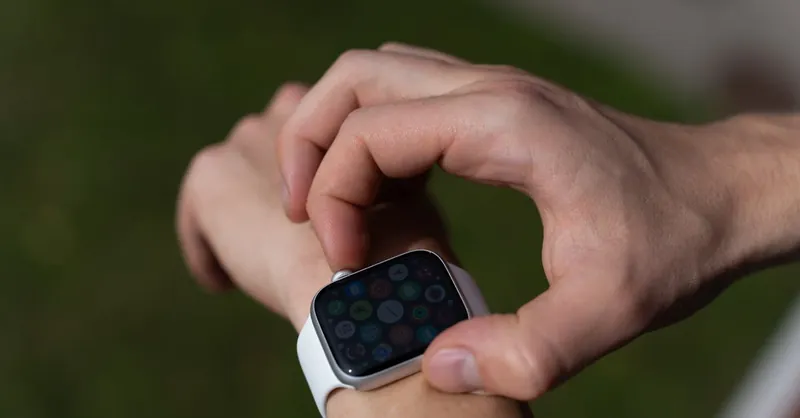
Image courtesy of Anastasiya Badun
Wearable Environmental Monitors: Designing Gadgets to Track Air Quality, UV Exposure, and Noise Levels
Expanding beyond personal health and fitness, wearable environmental monitors are an emerging class of microcontroller-based gadgets that empower users to stay informed about the quality of their surroundings in real time. By integrating sensors that measure air pollutants, ultraviolet (UV) radiation, and ambient noise levels, these wearables provide actionable feedback or alerts to help users make healthier, safer decisions throughout their daily routines. This category leverages the power of lightweight, energy-efficient microcontrollers like the ARM Cortex-M series and ESP32, combined with advanced sensor technology, making environmental awareness personal, portable, and continuous.
Key Environmental Parameters Monitored by Wearable Devices
-
Air Quality Monitoring
Using gas sensors such as the MQ-series (e.g., MQ-135 for air quality), CCS811, or BME680, wearable devices can detect harmful pollutants including carbon monoxide (CO), nitrogen dioxide (NO2), volatile organic compounds (VOCs), and particulate matter (PM2.5/PM10) in the air. These sensors provide analog or digital signals processed by the microcontroller to quantify pollution levels. Incorporating threshold-based alerts or continuous logging with timestamping enables users to identify hazardous locations, track indoor air quality, or assess exposure over time. -
UV Exposure Detection
Ultraviolet sensors like the VEML6075 or GUVA-S12SD measure UVA and UVB radiation, helping users understand their sunlight exposure risks and avoid potential skin damage or heatstroke. Microcontroller firmware can calculate accumulated UV index exposure and trigger warnings when safe limits are approached, beneficial for outdoor workers, athletes, or individuals with sensitive skin. -
Noise Level Monitoring
Sound level meters and microphone modules integrated with microcontrollers can track surrounding noise intensity in decibels (dB). This data helps users identify noisy environments that could contribute to hearing damage or stress. Wearable noise monitors can also incorporate algorithms for averaging sound levels, peak detection, and real-time alerts to promote hearing health.
Technical Considerations for Wearable Environmental Monitors
- Sensor Selection and Calibration: Choosing low-power, miniaturized environmental sensors compatible with microcontroller interfaces like I2C or SPI ensures accurate yet efficient readings. Periodic calibration routines within firmware maintain sensor reliability over time.
- Power Management: Since continuous monitoring can strain battery life, implementing duty-cycling, sleep modes, and event-driven sensing reduces energy consumption significantly.
- Data Visualization and Alerts: Utilizing Bluetooth Low Energy (BLE) connectivity, wearable monitors can transmit environmental data to companion apps for detailed analysis, historical tracking, or immediate alerts via haptic feedback or LEDs.
- Robust Firmware Design: Developing real-time embedded software capable of sensor fusion, noise filtering, and threshold-triggered notifications ensures usability and accuracy in dynamic environmental conditions.
By merging sophisticated environmental sensing with compact microcontrollers, wearable environmental monitors equip users with personalized insights into ambient air quality, UV radiation, and noise pollution, fostering healthier lifestyles and informed decisions. For embedded systems developers passionate about microcontroller programming and sensor integration, these projects present a rich opportunity to innovate at the intersection of environmental data analytics, low-power design, and wearable technology.
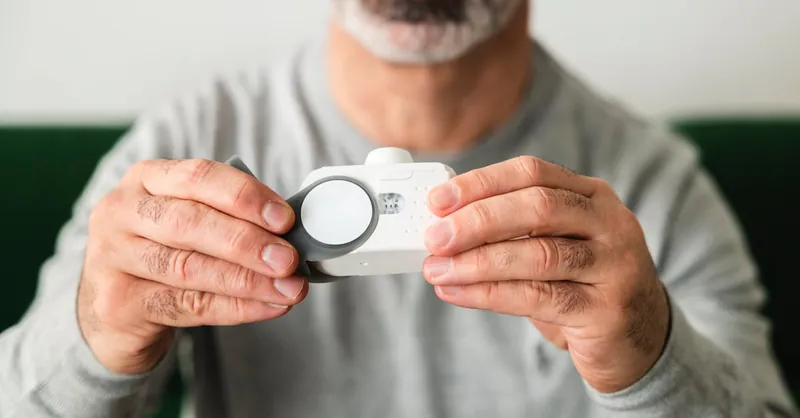
Image courtesy of Cnordic Nordic
Low-Power Design and Battery Management: Techniques to Maximize Wearable Usability
One of the biggest challenges in developing microcontroller-based wearable gadgets is optimizing power consumption to ensure long battery life without compromising functionality or user experience. Since wearables are inherently portable and expected to operate for extended periods between charges or battery replacements, adopting effective low-power design strategies and smart battery management techniques is essential. Achieving this balance involves both hardware choices and embedded firmware optimizations tailored for tiny energy budgets intrinsic to microcontroller platforms like ARM Cortex-M and ESP32.
Key Low-Power Design Techniques for Wearables
-
Leverage Microcontroller Sleep Modes
Most modern microcontrollers offer multiple low-power or sleep modes, which drastically reduce current draw by disabling unused peripherals and clock domains during idle periods. Efficient firmware design uses dynamic power management to switch between active and sleep states based on sensor activity, user interactions, or timed intervals. For example, deep sleep modes on ARM Cortex-M MCUs consume microamps of current while preserving key registers, making them ideal for intermittent sensor readings or BLE advertising intervals. -
Duty Cycling Sensors and Wireless Modules
Continuous sensor sampling and wireless communication are primary battery drains. Implementing duty cycling—where sensors and radios are powered only briefly at scheduled intervals—reduces average power significantly. For instance, accelerometers can be configured to generate interrupts only when motion surpasses a threshold, allowing the microcontroller to remain in sleep until relevant data arrives. Similarly, Bluetooth Low Energy (BLE) advertising and data transmission can be optimized by increasing connection intervals or batching notifications. -
Optimize Firmware Processing
Writing efficient code in C/C++ or MicroPython that minimizes CPU cycles avoids unnecessary energy expenditure. Techniques include avoiding busy-wait loops, using interrupt-driven event handling, and minimizing peripheral usage during active periods. Additionally, dynamic frequency scaling—adjusting the MCU clock speed to match real-time workload demands—can significantly reduce power consumption during less intensive processing. -
Choose Energy-Efficient Components
Selecting ultra-low-power sensors and modules is crucial. Many manufacturers offer tailored sensor variants optimized for minimal standby current and integrated features like built-in FIFO buffers, which allow batch data retrieval and reduce MCU wakeups. Integrating power regulators with high efficiency (e.g., low-dropout regulators or switching converters) and carefully designing PCB layouts further aids in lowering energy losses.
Battery Management Strategies for Wearable Gadgets
-
Use Rechargeable Lithium-Polymer (LiPo) Batteries
Compact LiPo batteries provide a favorable energy-to-size ratio suited to slim wearables. Employing battery fuel gauge ICs and charging management circuits integrated within the embedded system ensures safer, more reliable charging cycles and accurate battery level monitoring. -
Implement Intelligent Charging and Power Path Management
Designing firmware that dynamically manages charging currents, cutoffs, and system power prioritization extends battery lifespan and usability. Advanced wearables can incorporate energy harvesting sources (solar, thermoelectric, or kinetic energy) to supplement battery power and extend device autonomy. -
Real-Time Battery Monitoring and User Feedback
Embedded systems should continuously track battery voltage and current to predict remaining runtime and notify users through LEDs, haptics, or app alerts. This feedback loop enhances usability by preventing unexpected shutdowns and facilitating timely recharging.
By integrating these low-power design principles and battery management techniques, embedded systems developers can create wearable gadgets optimized for long-term usability without sacrificing performance or user experience. Emphasizing energy efficiency at every design layer—from microcontroller selection, sensor interfacing, to firmware algorithms—ensures that your microcontroller-based wearable projects achieve the practical goal of lasting power in a compact, user-friendly package.
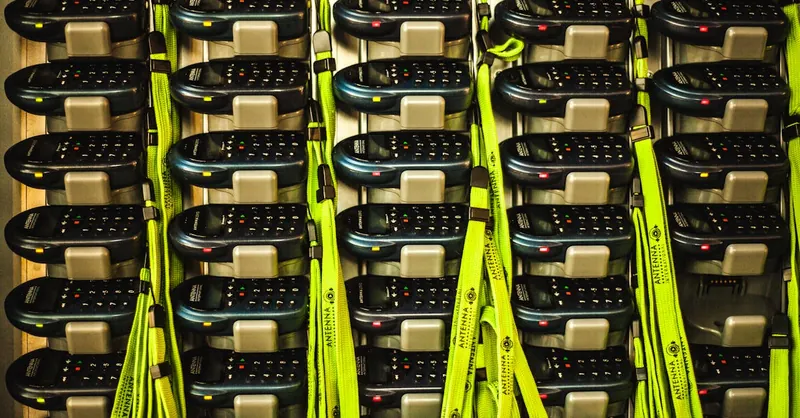
Image courtesy of Francesco Paggiaro
Programming Embedded Systems for Wearables: Best Practices in Efficient Code Development with Python (MicroPython) and C/C++
Programming microcontroller-based wearable gadgets demands careful attention to code efficiency, real-time data processing, and responsive event handling to meet the constraints of limited memory, processing power, and energy consumption. Whether you choose C/C++ for performance-critical firmware or Python via MicroPython for rapid prototyping and ease of development, adhering to best programming practices is vital to unlock the full potential of embedded systems in wearable technology.
Writing Efficient and Responsive Embedded Code
-
Optimize Real-Time Data Processing
Wearable gadgets continuously acquire sensor data—accelerometer readings, heart rate signals, or environmental measurements—that require prompt processing. Utilize interrupt-driven programming to handle sensor inputs and peripherals instead of polling loops, reducing CPU load and latency. Implement buffering schemes (e.g., circular buffers or FIFOs) to smoothly manage streaming data without data loss. For complex algorithms like sensor fusion or gesture recognition, consider fixed-point arithmetic over floating-point to conserve CPU cycles on low-power MCUs. -
Balance Between C/C++ and MicroPython
- C/C++ provides granular control over hardware resources, critical for time-sensitive operations and ultra-low-power management. It enables advanced optimizations like direct register access and inline assembly, delivering minimal latency in event handling and fine-tuned memory usage.
-
MicroPython, on the other hand, accelerates development with a high-level syntax and simplified debugging, suitable for prototyping sensor integrations and wireless communications swiftly. However, its higher abstraction layer may introduce overhead, so combine MicroPython with native C modules when performance bottlenecks arise.
-
Event-Driven Architecture for Wearables
Designing your firmware around asynchronous event handling rather than linear code paths improves responsiveness and power efficiency. Use interrupts from sensors or wireless modules to trigger actions, allowing the microcontroller to enter sleep states during idle periods. Event queues and state machines help manage complex device behaviors such as mode switching, user interactions, and communication protocols gracefully. -
Code Modularization and Reusability
Structure your embedded software with modular, reusable components—drivers, communication stacks, sensor interfaces—to simplify maintenance and scalability. Adopt consistent naming conventions and document interfaces clearly to facilitate debugging and collaboration. This practice is especially beneficial when blending C/C++ with MicroPython, enabling seamless integration and reuse of tested libraries. -
Memory and Power-Conscious Programming
- Minimize dynamic memory allocation; prefer static buffers sized appropriately to avoid fragmentation and failures.
- Optimize data structures to reduce RAM footprint and leverage program memory for constant data.
- Profile and eliminate unnecessary calculations inside critical loops to conserve CPU cycles and extend battery life.
By following these best practices in embedded systems programming, developers can build wearable devices that reliably handle real-time sensor data, deliver smooth user experiences, and maximize power efficiency. Whether working in C/C++ for performance or MicroPython for rapid iteration, combining efficient coding techniques with hardware-aware optimizations will elevate your microcontroller wearable projects to professional-grade solutions.
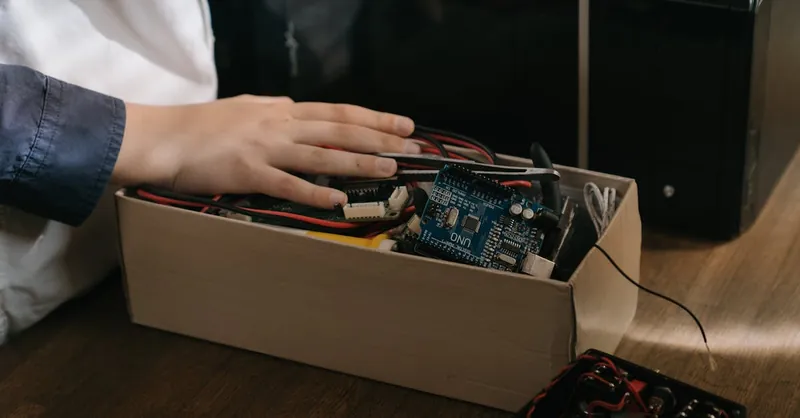
Image courtesy of cottonbro studio
Integrating Wireless Communication: Enabling BLE, Wi-Fi, and LoRa Connectivity in Microcontroller Wearables
Effective wireless communication is a cornerstone for modern microcontroller-based wearable gadgets, enabling seamless data transmission and remote control essential for health monitoring, fitness tracking, smart accessories, and environmental sensing. Integrating protocols such as Bluetooth Low Energy (BLE), Wi-Fi, and LoRa enhances your wearable’s ability to send and receive data efficiently, while balancing power consumption and range to suit your specific application.
Bluetooth Low Energy (BLE): Optimized Wireless for Wearables
BLE is the most popular wireless standard for wearables due to its ultra-low power consumption, robust compatibility with smartphones, and straightforward integration. Microcontrollers like the ESP32 or Nordic’s nRF52 series provide integrated BLE stacks, simplifying firmware development and reducing hardware complexity.
Key advantages of BLE in wearables include:
- Low energy profile: Suitable for continuous or periodic sensor data updates without quickly draining batteries.
- Standard profiles: Supports standard BLE services (Heart Rate, Battery Level, Device Information) for interoperability with mobile apps.
- Flexible connection management: Allows customizable connection intervals and data packet sizes to optimize latency versus power use.
- Secure communications: Implements encryption and pairing mechanisms critical for personal health or sensitive data.
When implementing BLE, focus on proper event-driven connection handling, efficient advertising strategies, and offloading cryptographic operations to hardware accelerators (when available) to maximize power savings.
Wi-Fi: High Bandwidth Connectivity for Advanced Wearables
Wi-Fi integration in wearables opens possibilities for direct internet access, remote cloud synchronization, and firmware over-the-air (OTA) updates. While more power-intensive than BLE, Wi-Fi is indispensable for applications requiring high data throughput such as multimedia notifications or continuous environmental data streaming.
Microcontrollers such as the ESP32 combine dual-core processing with integrated Wi-Fi and BLE, facilitating versatile connectivity options in a single chip.
To optimize Wi-Fi usage in wearables:
- Utilize Power Save Modes (PSM) and Target Wake Time (TWT) features of modern Wi-Fi standards to reduce energy consumption during inactive periods.
- Implement event-triggered data bursts to batch sensor uploads rather than continuous streaming.
- Prioritize lightweight communication protocols like MQTT or CoAP over TCP/IP stack for constrained environments.
LoRa: Long-Range, Low-Power Communication for Wearables
For wearables targeting remote or outdoor use cases where cellular or Wi-Fi is unavailable, LoRa (Long Range) wireless technology offers exceptional transmission distances (several kilometers) with minimal power expenditure. LoRa modules coupled with low-power microcontrollers are ideal for environmental monitoring wearables, asset tracking, or emergency alert devices.
Key features of LoRa integration include:
- Asynchronous communication: Devices transmit small packets infrequently, conserving battery life.
- Star network topology: Simplifies architecture by connecting wearables directly to gateways for cloud connectivity.
- Robust interference resistance: LoRa’s chirp spread spectrum modulation is resilient in challenging RF environments.
Integrating LoRa requires external transceiver modules (e.g., Semtech SX127x series) and managing duty cycles within firmware to comply with regional radio regulations. Combining LoRa with local BLE or Wi-Fi connectivity for hybrid communication models can also enhance wearable versatility.
Best Practices for Wireless Integration in Wearables
- Choose the protocol matching your range, throughput, and power requirements: BLE for close-range smartphone pairing, Wi-Fi for data-heavy applications, and LoRa for long-distance, low-rate communication.
- Optimize antenna placement and PCB design: Ensures reliable signal strength and reduces power wasted on retransmissions.
- Implement secure communication protocols: Protect user data privacy, especially in health and personal devices.
- Profile and tune your firmware’s wireless stack: Balances latency, throughput, and battery consumption dynamically.
- Test under realistic conditions: Evaluate wireless performance in typical user environments and optimize parameters accordingly.
By meticulously integrating BLE, Wi-Fi, or LoRa wireless communication into your microcontroller wearable projects, you unlock powerful capabilities for real-time data exchange, remote monitoring, and interactive user experiences. This connectivity foundation amplifies the functionality and appeal of wearable gadgets, enabling them to seamlessly fit into the Internet of Things (IoT) ecosystem while adhering to strict power and size constraints crucial for embedded systems design.

Image courtesy of SHVETS production
